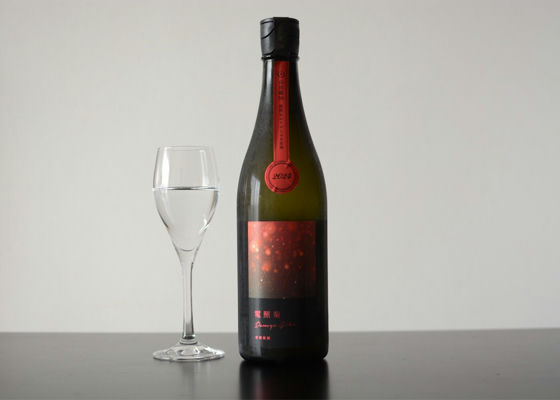


Hori
We received a bottle of Kangiku's Densho-Chrysanthemum Origami.
Like the Denshogiku without lees, we had been waiting for this bottle for a year. We had high expectations for the red Denshogiku because of the deliciousness of the clear Denshogiku (yellow Denshogiku) that we had opened earlier.
First, we took a sip of the top clear.
Hmm? Is it totally different from the yellow Denshogiku?
I thought it tasted the same, so I was surprised. I thought it was just my imagination, so I compared them side by side with Hwang Denshogiku, but they are still totally different.
The Yellow Denshogiku is a sweet, juicy, royal road, and if I had to say, the taste is straightforward and easy to understand. Aka Densho-Chrysanthemum has a lactic acidity and milky taste that is unique to orikara-mi, as well as a complex bitterness and astringency in the aftertaste.
The same Kangiku also has a spring release, "Haruhi," which has a special orikarami made to order for sake dealers in addition to the nationally available Sumi-shu, and these two bottles are the same sake with or without lees.
The two bottles of Denshogiku are not only different in terms of the presence or absence of lees, but also in that they were brewed with different tastes in mind.
It will be interesting to see how the TRUE RED, whose release was cancelled this year, differs from the TRUE WHITE.
Japanese>English